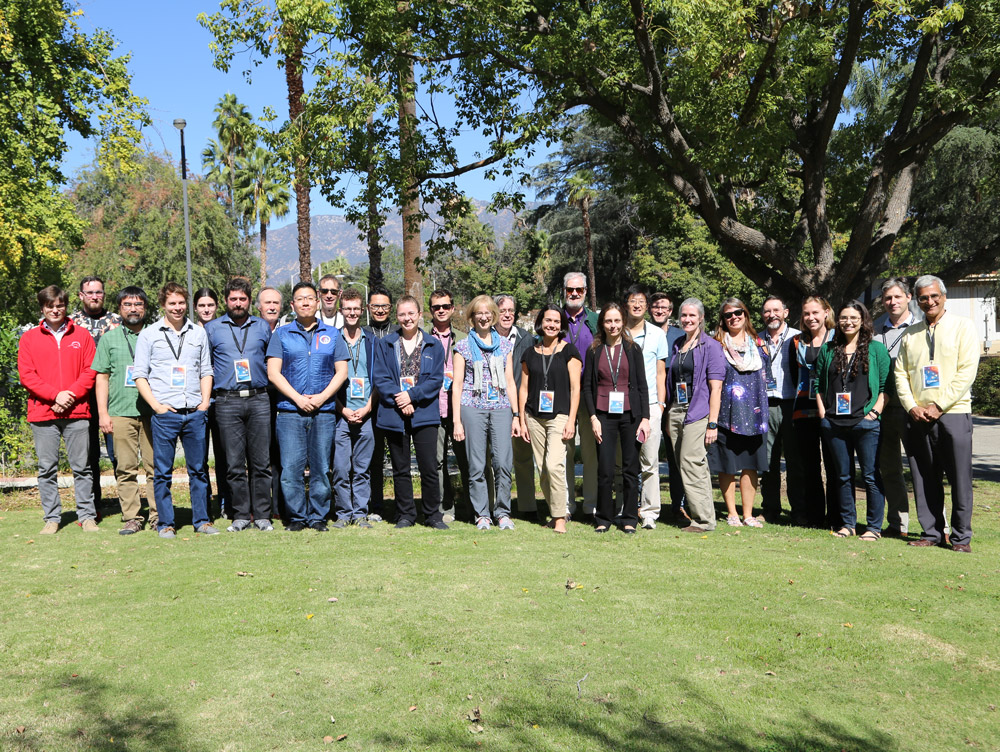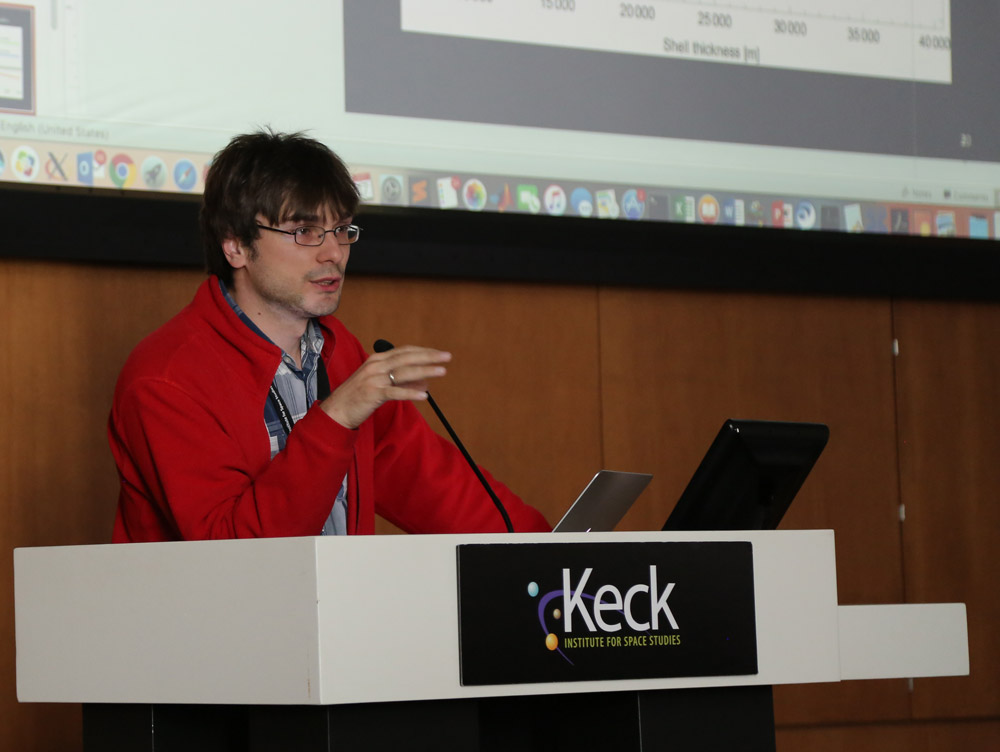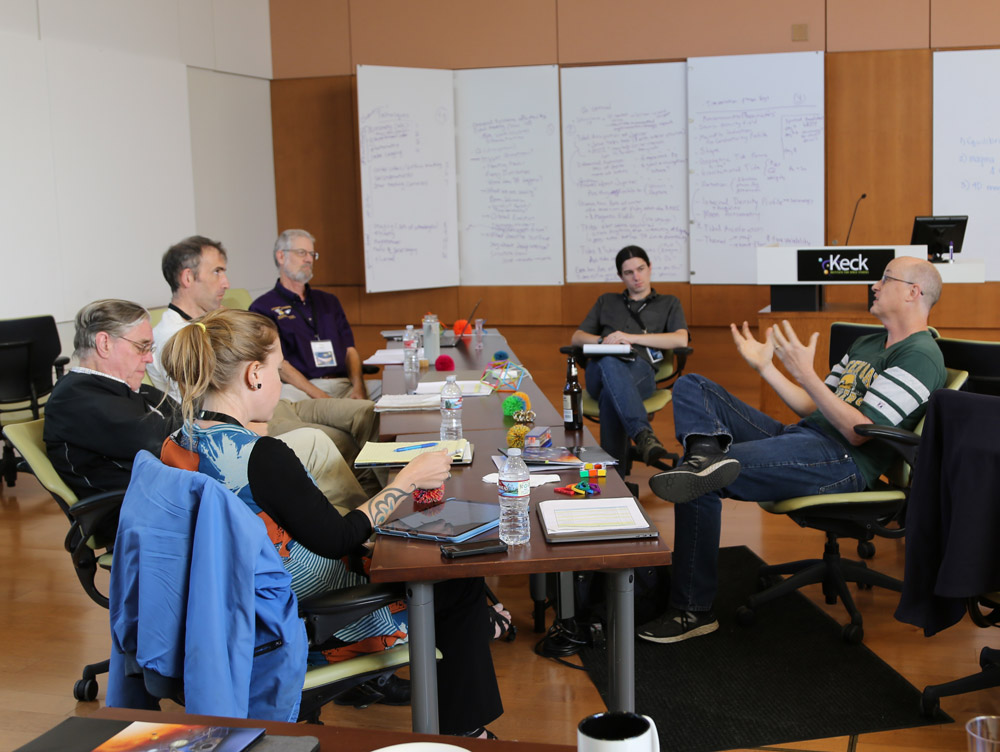Workshop Overview:
The evolution of planets and satellites and their potential habitability are central questions of planetary science. Recent discoveries from spacecraft missions and telescopic programs have illuminated the central role that tidal heating plays in the evolution of worlds across our solar system and beyond. This fundamental process drives the orbital evolution of planetary-satellite systems as a whole, and shapes the surface environments and geological activity of satellites, impacting the habitability of ocean worlds (Europa, Enceladus, Titan, Ganymede, etc.). However, despite its broad ranging importance, there remain fundamental gaps in our understanding of tidal heating. For example: Where and how is tidal heat actually dissipated? How do we link laboratory experiments of rheology to planetary-scale observations of deformation or heat flow? How are subsurface oceans created and maintained?
While there are well-tested tools in place to study a variety of individual planetary processes, there is no established path forward for unraveling the interconnected roles of tidal heating and orbital evolution. Such investigations will require innovative approaches and new technologies that can pin downthe orbital evolution and deformation of these worlds, integrating laboratory work, spacecraft and ground-based observations, and numerical models. Our study will bring together some of the brightest minds in planetary science, mission design, and instrumentation to generate new, original ideas for revolutionizing our understanding of tidal heating.
Our central objective is to integrate the numerous recent advances across the relevant fields, including recent laboratory studies, new telescopic/spacecraft data, and new instrumentation under development, in order to construct a coherent path forward for establishing a definitive framework for understanding tidal heating and its influence on the evolution of planetary systems. The combination of recent scientific advances as well as the forthcoming Europa Clipper and JUICE missions, the formation of the NASA Ocean Worlds program, and current/future New Frontiers-class missions to tidally heated worlds (Io, Enceladus, Titan) make it clear that now is a critical time for integrating what we know, identifying what we do not know, and creating a clear roadmap for the future science investigations and technologies that will be needed to optimize missions in the coming decades.
Amongst the myriad tidally heated worlds in our solar system, the effects of tidal heating are most prominent within the Laplace resonance between Jupiter’s moons Io, Europa, and Ganymede. Io is the most tidally deformed and heated world in the solar system—as evidenced by the hundreds of continually erupting volcanoes across its surface, and is thus the ideal target for investigating these questions. Furthermore, while several missions are planned to explore the Jovian system in the coming decades (e.g. Europa Clipper and JUICE), our understanding of orbital dynamics and tidal heating in the system will be limited by the lack of measurements of Io. Our study will therefore emphasize the Jovian system, and Io in particular, as the best laboratory for understanding the fundamental processes of tidal heating.
Our study will be framed around three fundamental science questions:
- How do solid/liquid planetary bodies and planetary materials respond and deform in response to periodic tidal forcing?
- How do tides influence global heat flow and its variations (spatial and temporal), and how does this heat translate into specific geologic processes?
- How do the spins and orbits of planetary satellites respond to tides over long timescales, and how does that couple with the thermal evolution?
These questions will serve as the cornerstone for discussion in our study. We will address each question in a three-pronged approach. First, we will review and integrate recent scientific advances and the relevant new or in-development technology and instrumentation. Second, we will identify the key gaps in our current framework for understanding tides and tidal heating. Lastly, we will identify the specific requirements for bridging these gaps, including: the measurements to be acquired, the instrument technologies to be developed or matured, and the new theoretical modeling capabilities and/or data techniques to be developed. The resulting final report will represent a roadmap for future understanding of tidal heating.






































